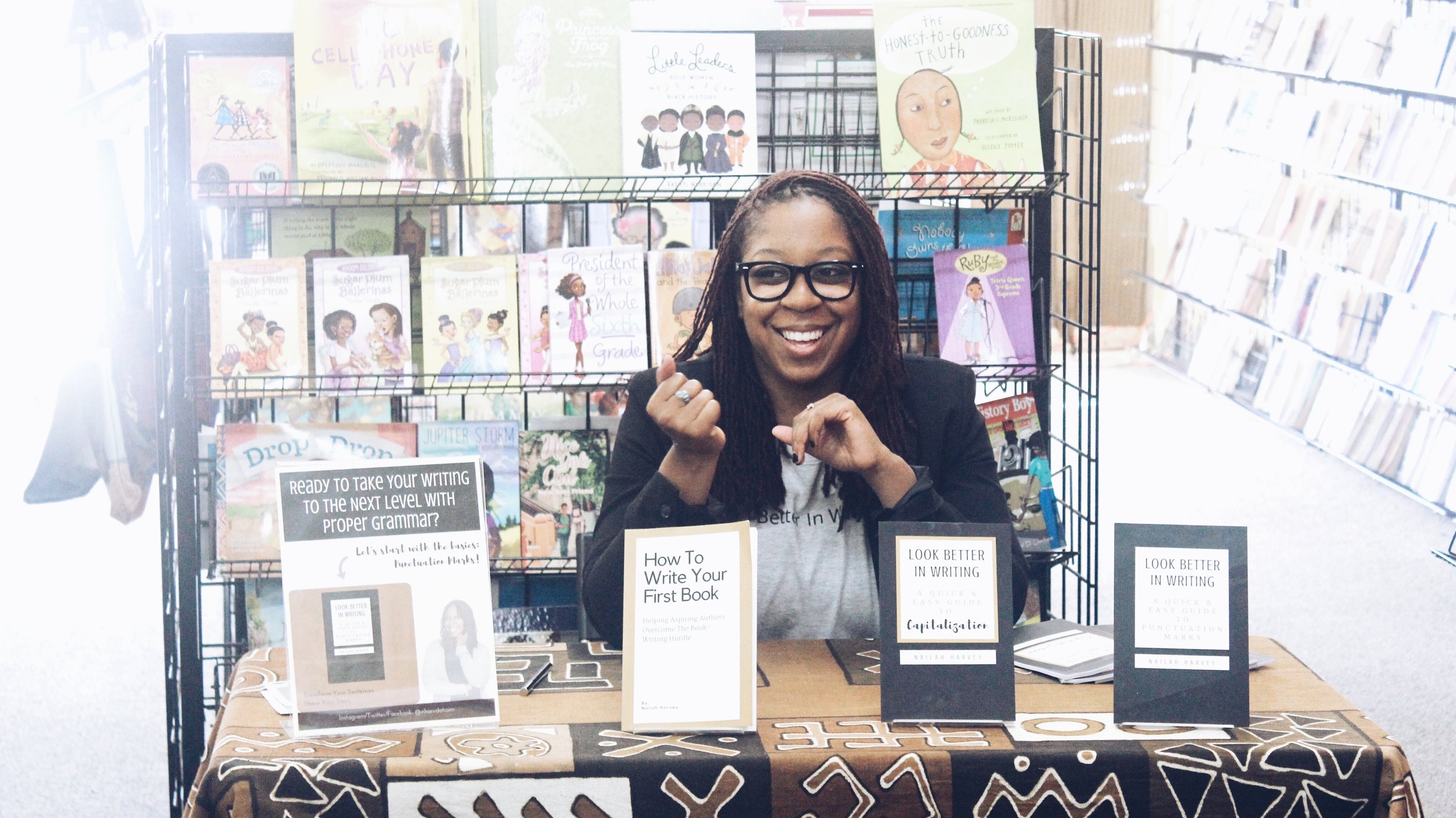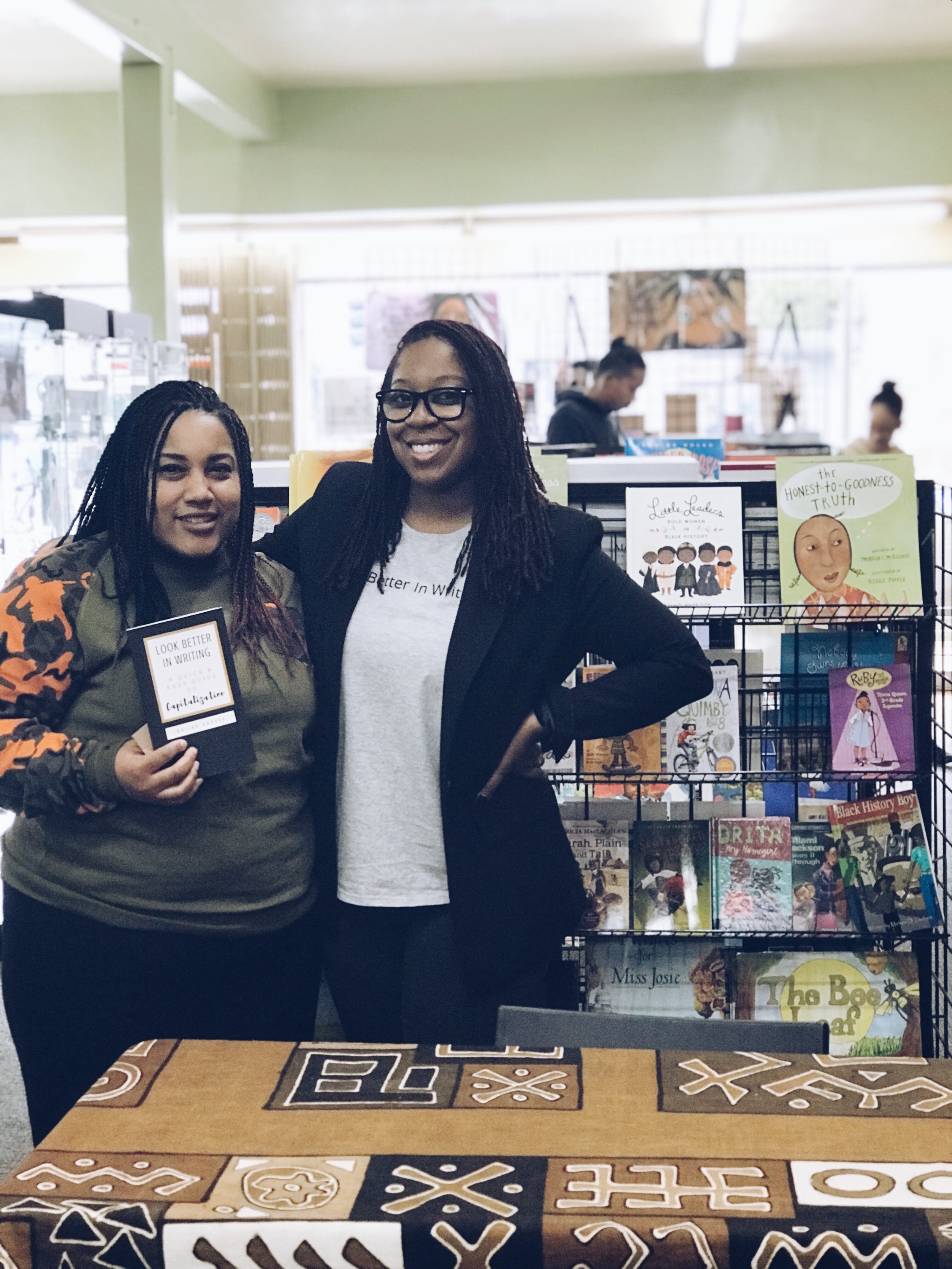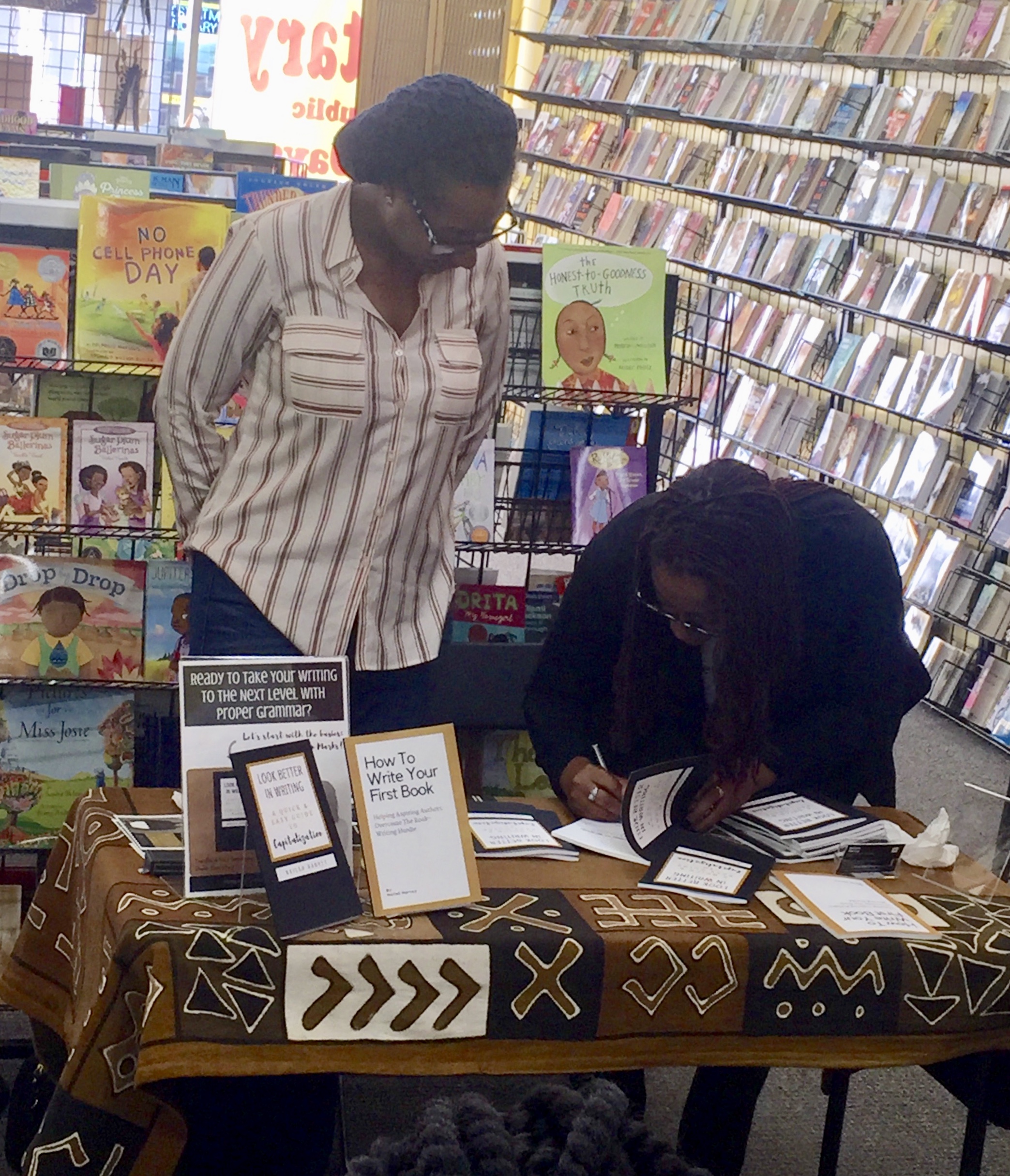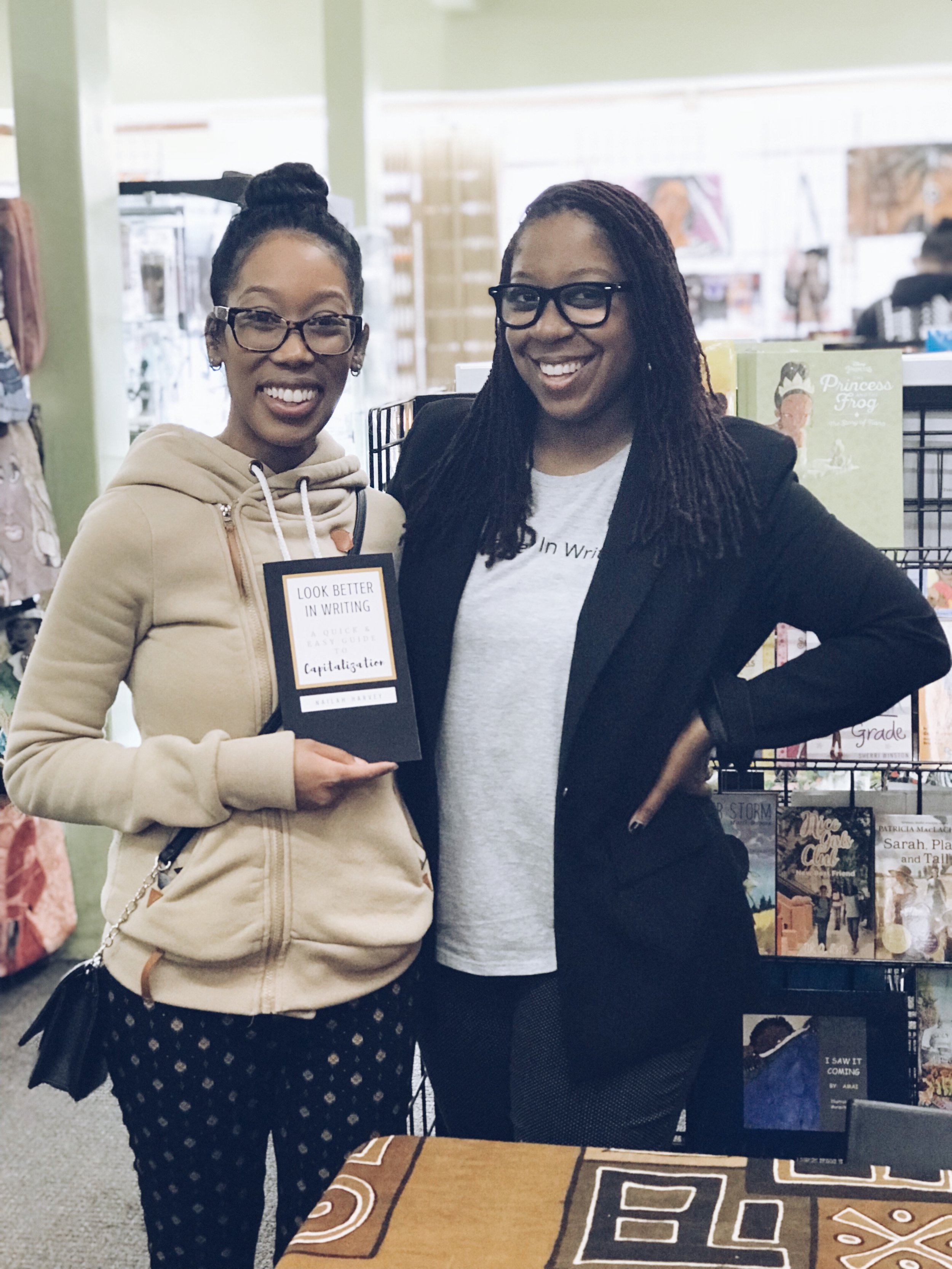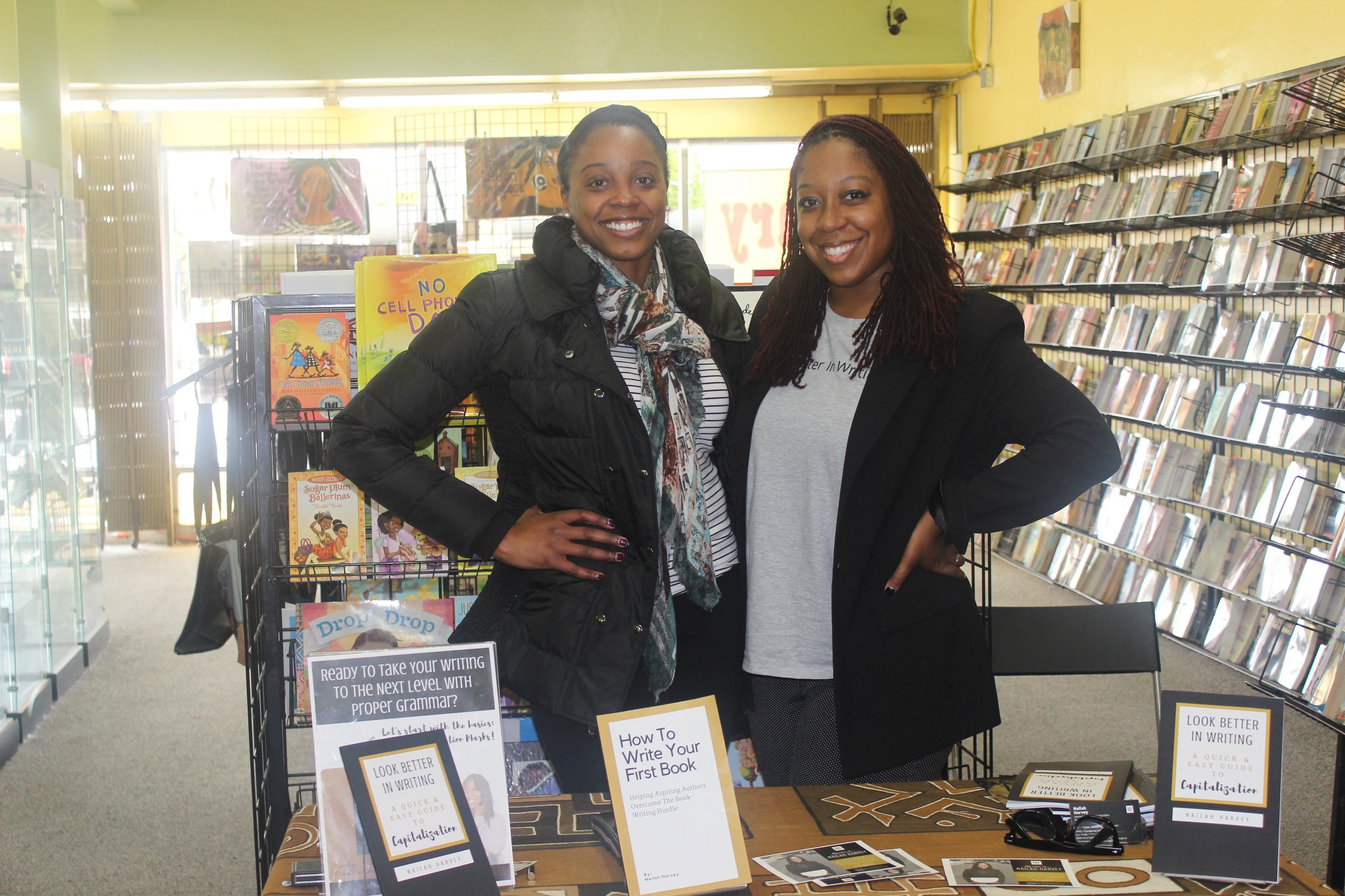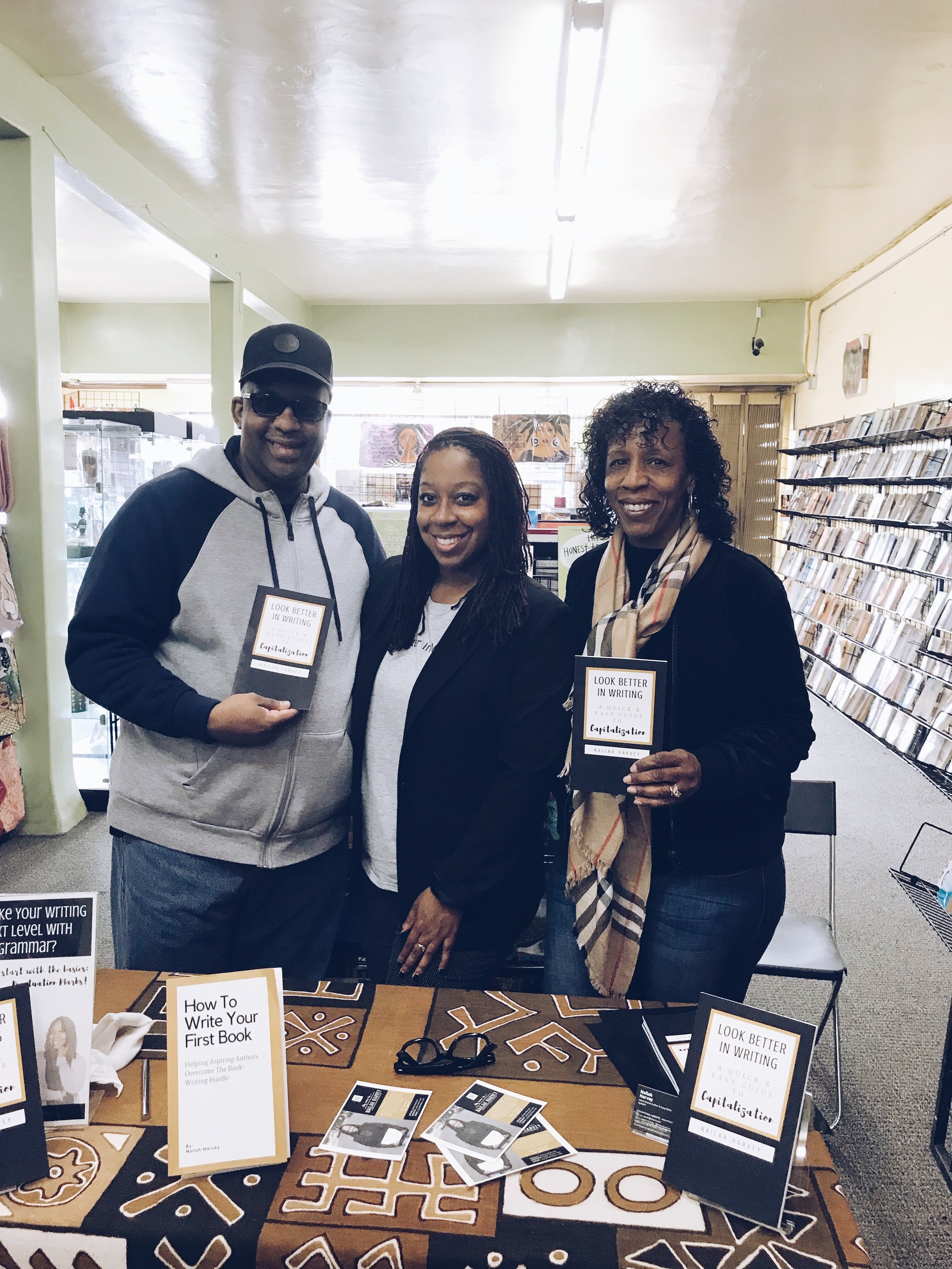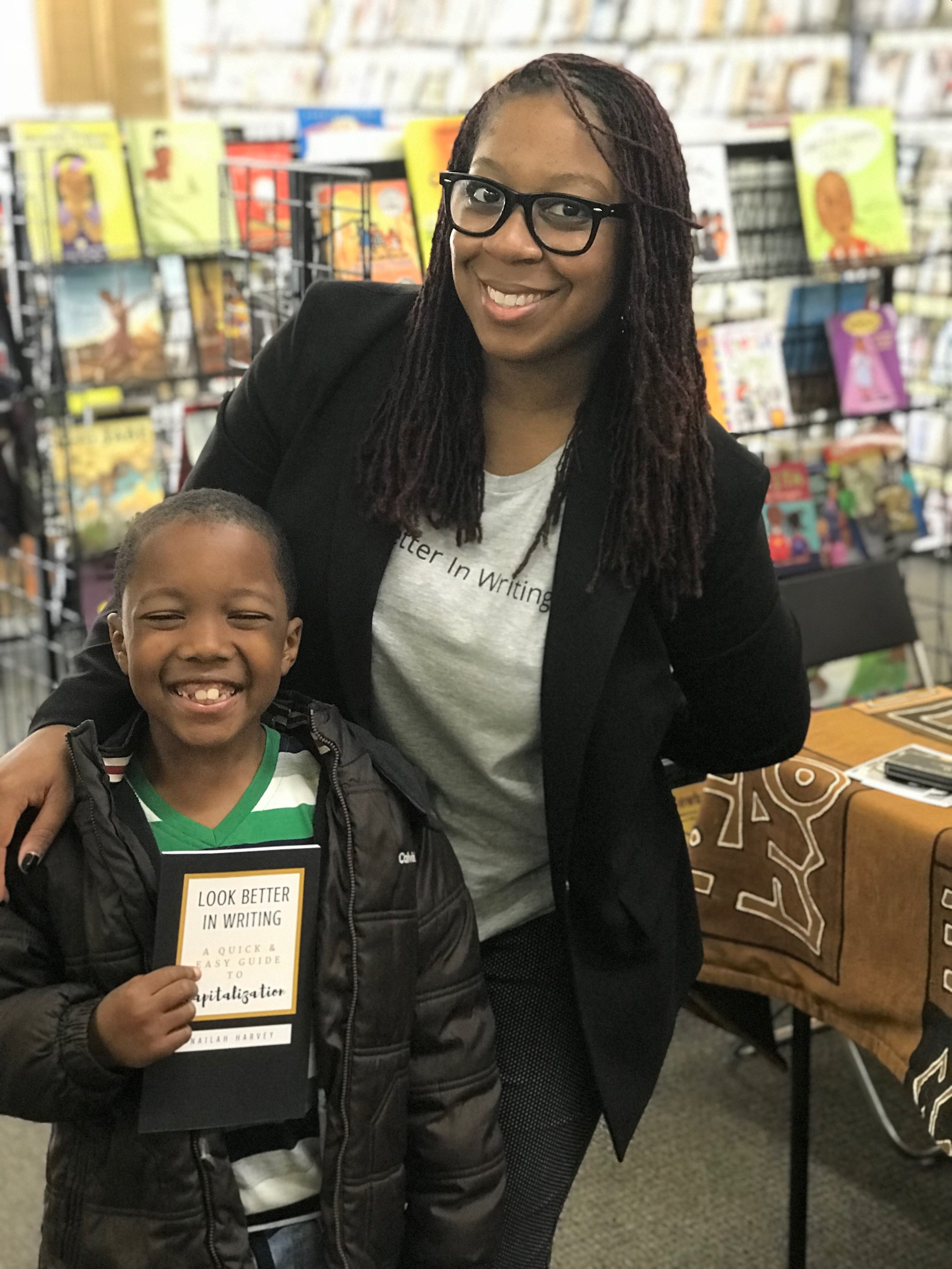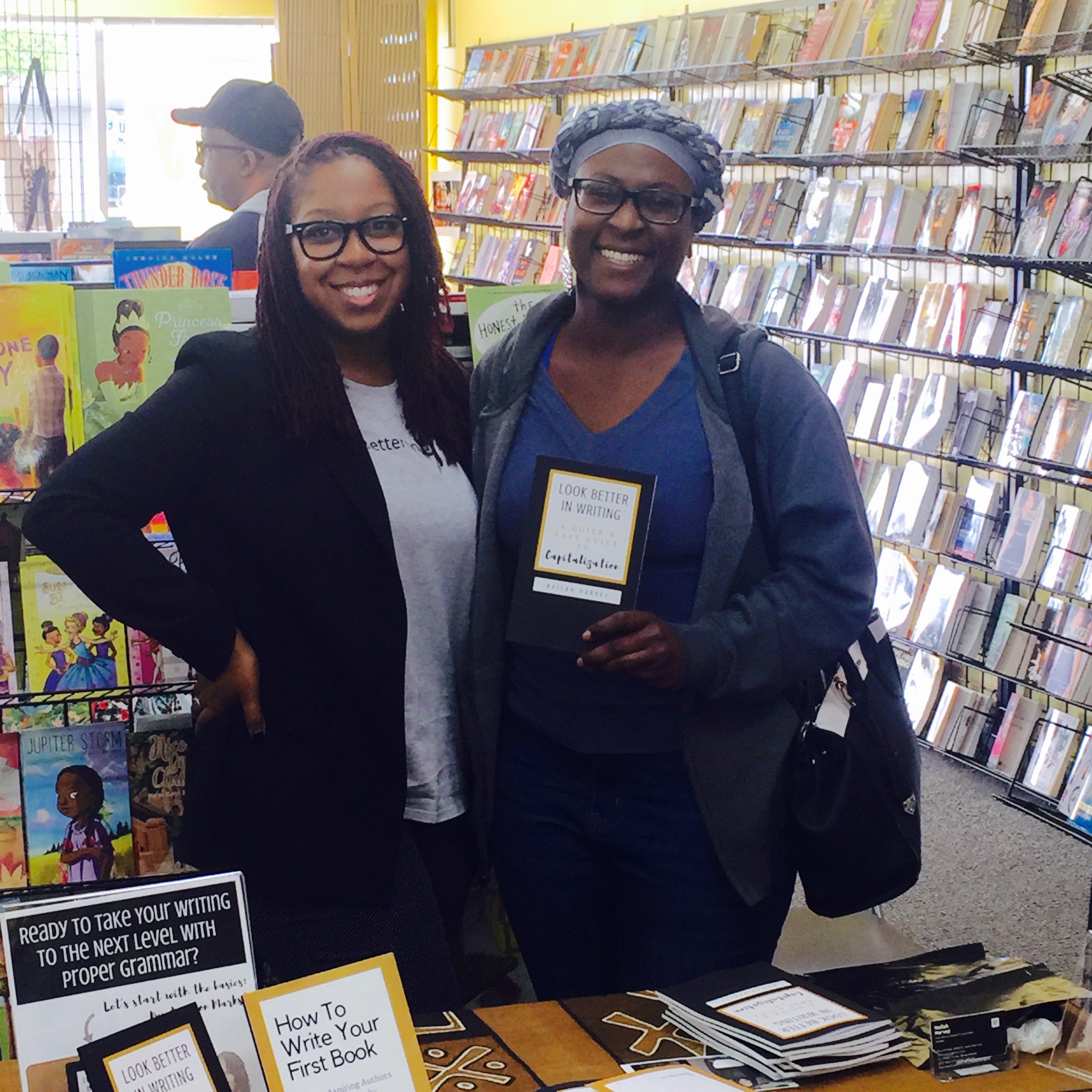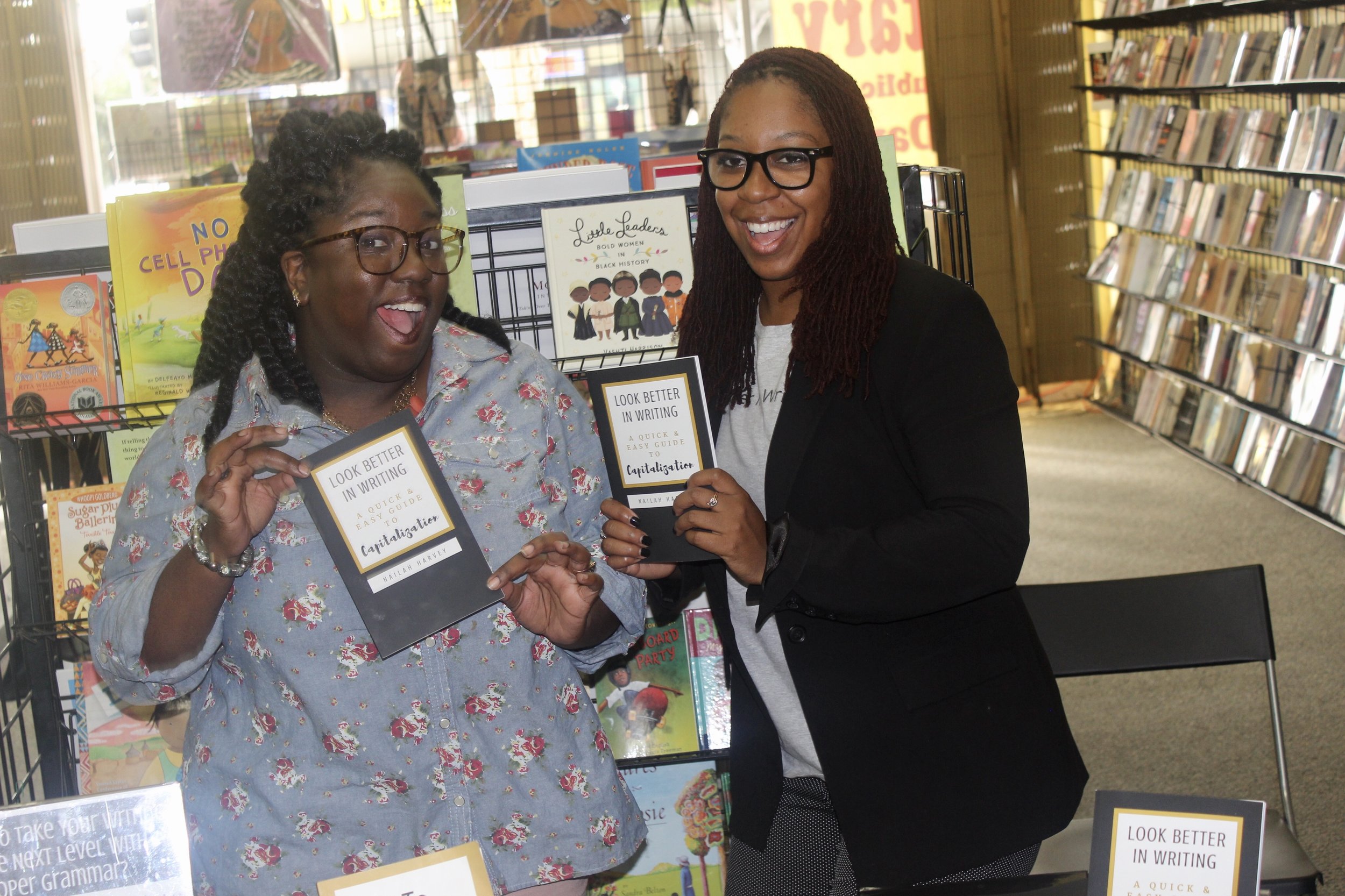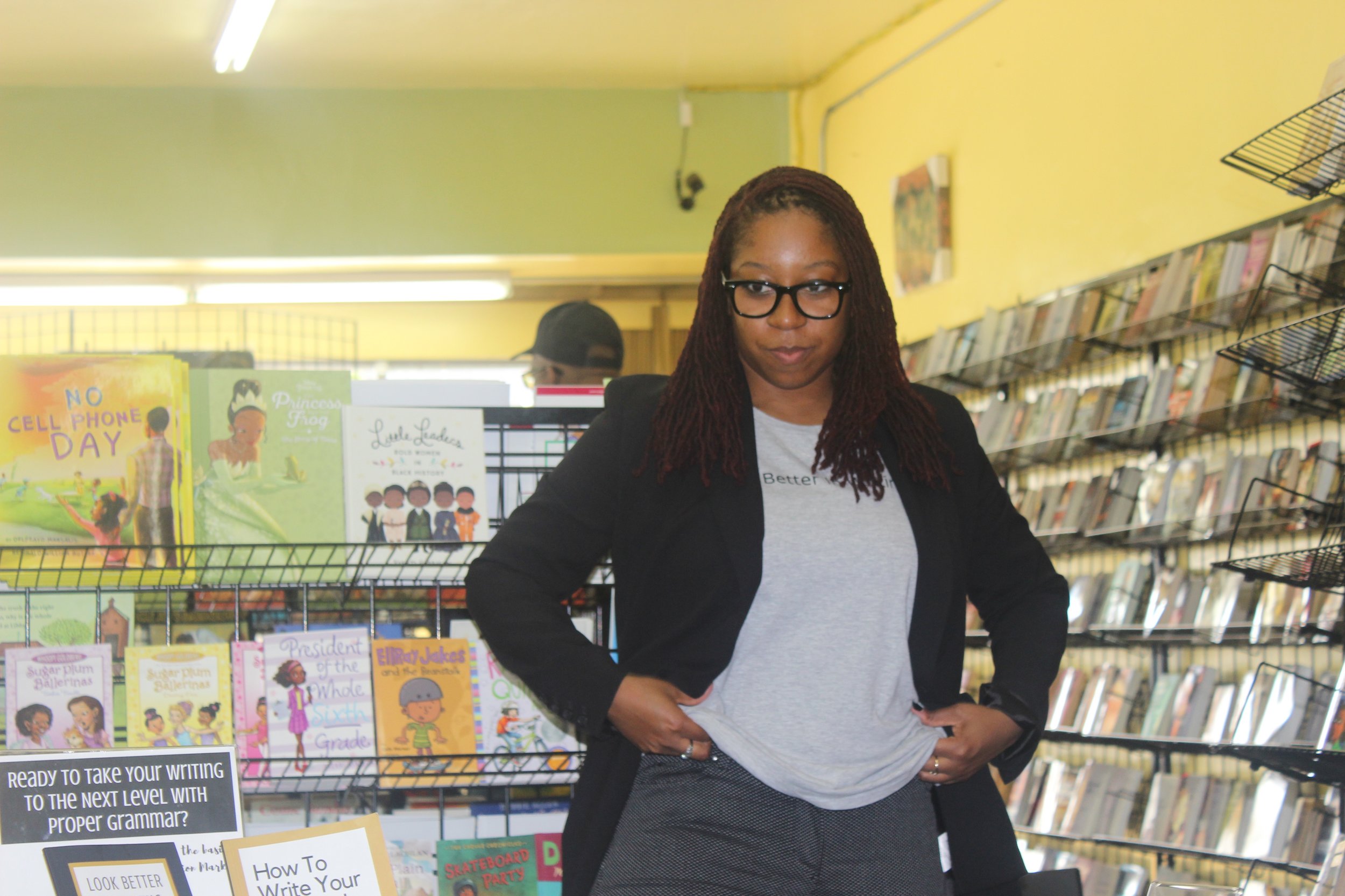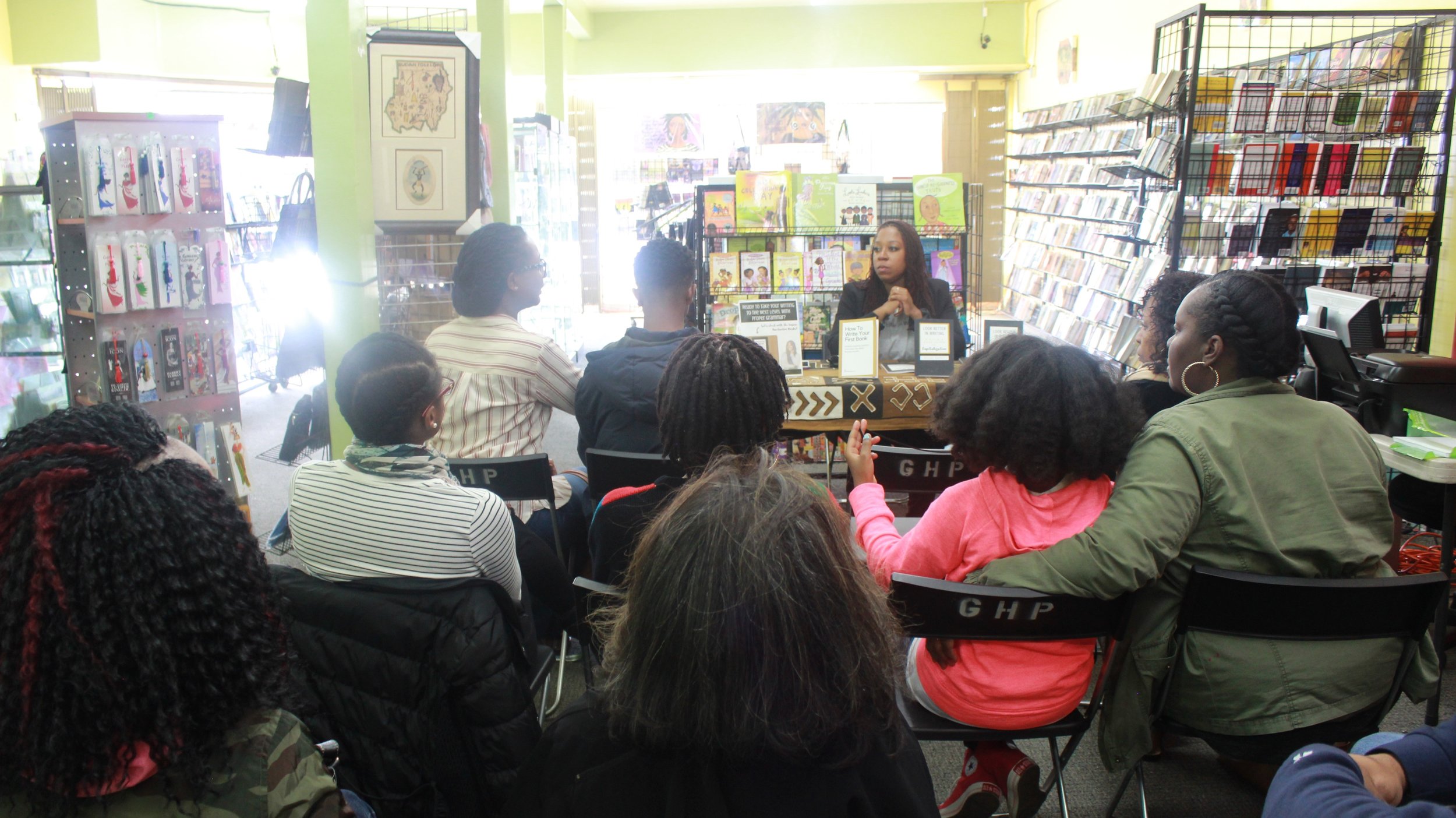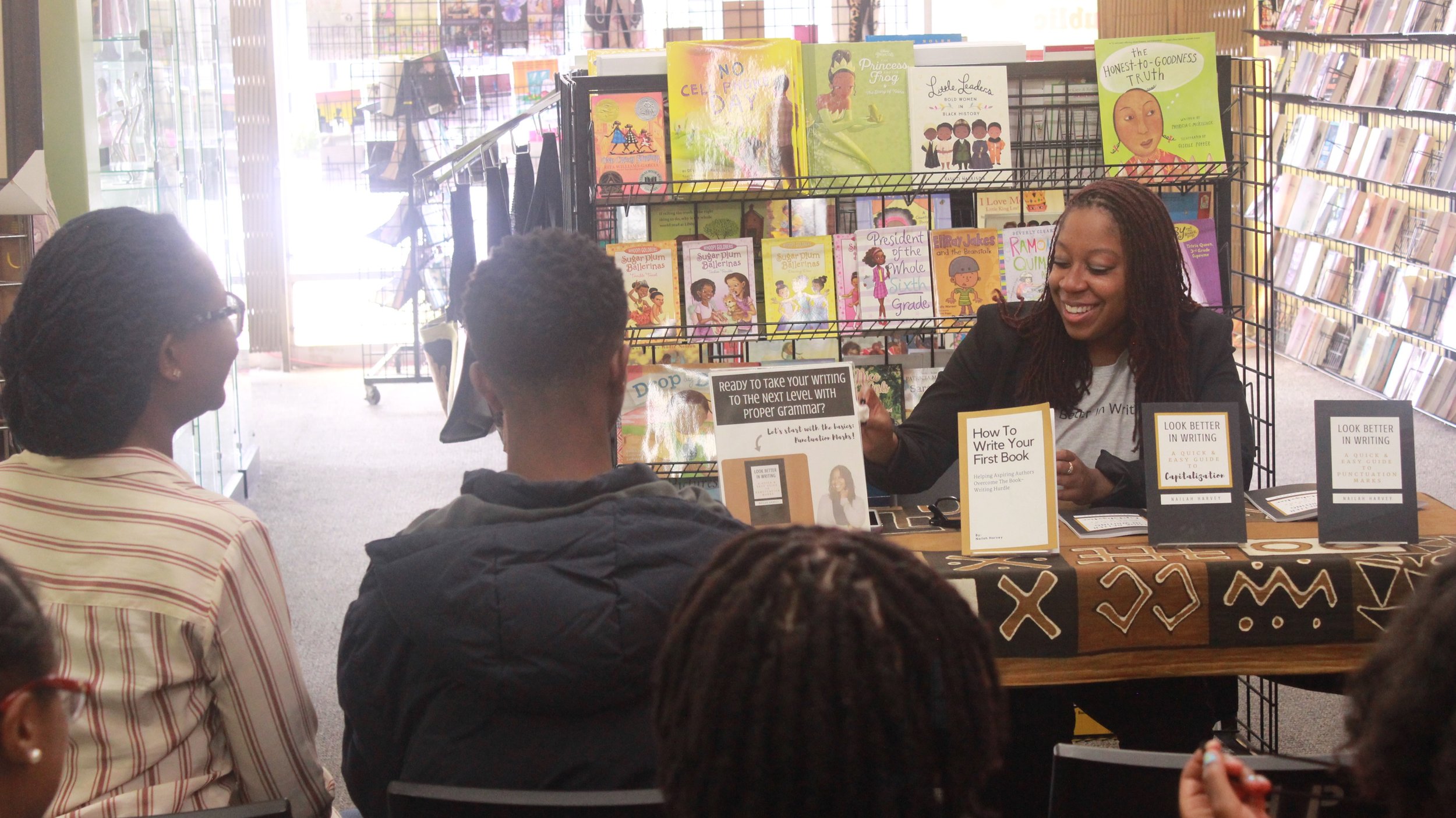3 Things I Learned From My Most Recent Book Signing
Hello, writers!
It’s been a few weeks since the overwhelm of my latest book release, Look Better In Writing: A Quick & Easy Guide to Capitalization (Vol.2). Now that I have a fresh mind to level-headedly reminisce about the pros and cons of my book signing on March 3, 2018, I thought it would be a great time to blog.
But first, let me THANK everyone who showed their support via attendance, purchase, donation, encouraging words, etc. I APPRECIATE YOU ALL. 🖤
Okay, let’s move on to the three things I learned from my most recent book signing and how you can learn from them, too.
1. Always Be Ready to Explain What Your Book Is About
Sometimes, people may be experiencing your book for the first time (regardless of the online promotion and word-of-mouth buzz). Sometimes, the cover of your book doesn't fully describe what the book is about. Sometimes, people forget your book’s purpose. This is all okay, but as an author, you must be ready to explain what your book is about at any given moment. That being said, Look Better In Writing: A Quick & Easy Guide to Capitalization (Vol.2) is about the most common rules for writing or printing in capital letters. [The first volume of the Look Better In Writing (LBIW) book series is about punctuation marks.] Both books are written to help people strengthen their written communication skills and gain confidence in their writing.
Like Vol.1, this book is condensed into a quick & easy guide. Meaning, I don't define every single capitalization rule in the history of English, because who has the time to read all of that?! Each book chapter represents a common capitalization mistake that I see on/in social media, professional emails, text messages, and anywhere else there’s writing. If you’ve ever gotten confused about capitalizing days of the week, seasons, and proper nouns, then Look Better In Writing: A Quick & Easy Guide to Capitalization (Vol.2) is for you!
2. Always Be Ready to Explain Why You Wrote Your Book
Along with explaining what your book is about, you may want to add why you wrote the book. Sometimes, “the why” gives a little backstory to your overall work, and readers love a good backstory. There are a few reasons why I wrote Look Better In Writing: A Quick & Easy Guide to Capitalization (Vol.2), but the main reason was/is to spread grammar awareness and the importance of language capital. Let’s face it, English is the global language. Whether it’s your first or second language, understanding the English language is a skill set and commodity to have. (That’s why so many native English-speaking teachers make lots of money overseas. ) And because English is so highly regarded...why not master it?! The quickest way to master the English language, in my opinion, is to fully understand the basics of grammar and the rules of writing mechanics. My first grammar book talked about punctuation marks. Vol. 2 continues the conversation of written communication with capitalization as the topic. Why? Because the correct use of capital (upper-case) letters can show your understanding of the English language.
3. Be Open to Telling Aspiring Authors How You Wrote Your Book
Not only do people like knowing “the what” and “the why” of things, but they also like knowing “the how.” That’s why YouTube tutorials are so popular. They show (and tell) us how to put something together, take something apart, etc. When it comes to aspiring authors, my experience teaches me that they like hearing success stories from published authors. A success story can simply be a testimony of how an author took an idea from their brain to the (laptop) keyboard in the form of a book. That’s a major accomplishment to some people, and here’s how I did it for Look Better In Writing: A Quick & Easy Guide to Capitalization (Vol.2):
• I used the fill-in pages from my How To Write Your First Book: Helping Aspiring Authors Overcome the Book-Writing Hurdle workbook to organize my thoughts.
• I wrote the first draft of the book in Google Docs, so I could edit it wherever I went (e.g. school, library, etc). After 3 weeks or so, I transferred the manuscript to a previously-used Microsoft Word format (from another book).
• I dedicated a few days for editing only (after I finished writing content). I REPEAT: I wrote the book first, and I edited later.
• I hired a freelancer to format my Microsoft Word document for Amazon & CreateSpace instead of wasting time trying to do it myself.
Writing this book was challenging, and I neglected a few other things on my to-do list that didn’t pertain to the book, but it was worth it! There’s no way I would’ve written this book (in the timeframe that I did) without prayer, a plan, and persistence. #ThankYouJesus 🙏🏽
I pray you all accomplish your book-writing AND book-publishing goals!
Godspeed.


